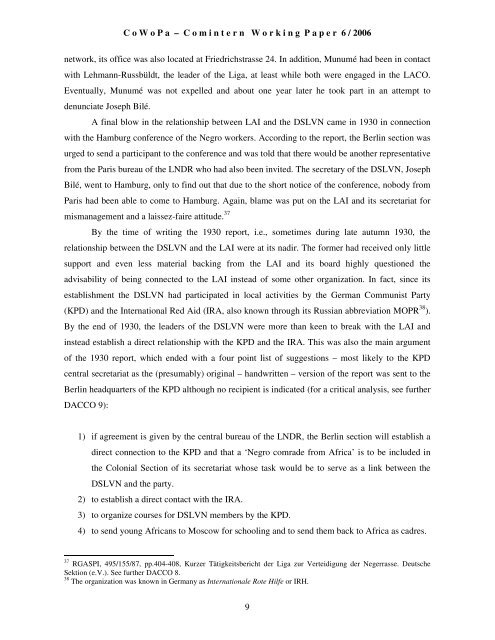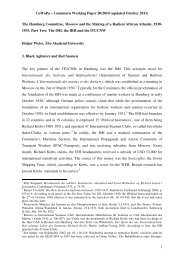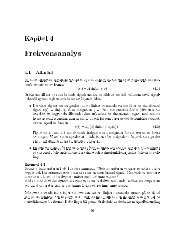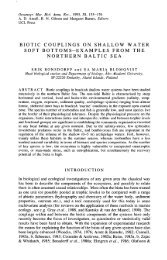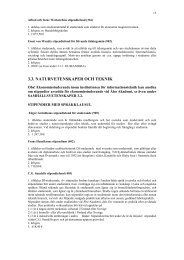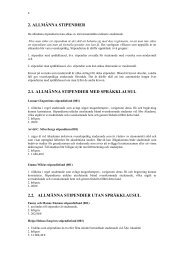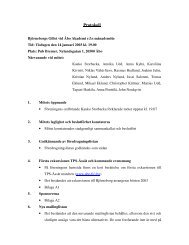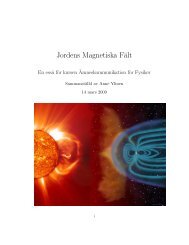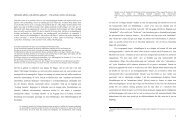C o W o P a – C omintern W orking P aper 6 / 2006 1 ... - Åbo Akademi
C o W o P a – C omintern W orking P aper 6 / 2006 1 ... - Åbo Akademi
C o W o P a – C omintern W orking P aper 6 / 2006 1 ... - Åbo Akademi
Create successful ePaper yourself
Turn your PDF publications into a flip-book with our unique Google optimized e-Paper software.
C o W o P a <strong>–</strong> C o m i n t e r n W o r k i n g P a p e r 6 / <strong>2006</strong><br />
network, its office was also located at Friedrichstrasse 24. In addition, Munumé had been in contact<br />
with Lehmann-Russbüldt, the leader of the Liga, at least while both were engaged in the LACO.<br />
Eventually, Munumé was not expelled and about one year later he took part in an attempt to<br />
denunciate Joseph Bilé.<br />
A final blow in the relationship between LAI and the DSLVN came in 1930 in connection<br />
with the Hamburg conference of the Negro workers. According to the report, the Berlin section was<br />
urged to send a participant to the conference and was told that there would be another representative<br />
from the Paris bureau of the LNDR who had also been invited. The secretary of the DSLVN, Joseph<br />
Bilé, went to Hamburg, only to find out that due to the short notice of the conference, nobody from<br />
Paris had been able to come to Hamburg. Again, blame was put on the LAI and its secretariat for<br />
mismanagement and a laissez-faire attitude. 37<br />
By the time of writing the 1930 report, i.e., sometimes during late autumn 1930, the<br />
relationship between the DSLVN and the LAI were at its nadir. The former had received only little<br />
support and even less material backing from the LAI and its board highly questioned the<br />
advisability of being connected to the LAI instead of some other organization. In fact, since its<br />
establishment the DSLVN had participated in local activities by the German Communist Party<br />
(KPD) and the International Red Aid (IRA, also known through its Russian abbreviation MOPR 38 ).<br />
By the end of 1930, the leaders of the DSLVN were more than keen to break with the LAI and<br />
instead establish a direct relationship with the KPD and the IRA. This was also the main argument<br />
of the 1930 report, which ended with a four point list of suggestions <strong>–</strong> most likely to the KPD<br />
central secretariat as the (presumably) original <strong>–</strong> handwritten <strong>–</strong> version of the report was sent to the<br />
Berlin headquarters of the KPD although no recipient is indicated (for a critical analysis, see further<br />
DACCO 9):<br />
1) if agreement is given by the central bureau of the LNDR, the Berlin section will establish a<br />
direct connection to the KPD and that a ‘Negro comrade from Africa’ is to be included in<br />
the Colonial Section of its secretariat whose task would be to serve as a link between the<br />
DSLVN and the party.<br />
2) to establish a direct contact with the IRA.<br />
3) to organize courses for DSLVN members by the KPD.<br />
4) to send young Africans to Moscow for schooling and to send them back to Africa as cadres.<br />
37 RGASPI, 495/155/87, pp.404-408, Kurzer Tätigkeitsbericht der Liga zur Verteidigung der Negerrasse. Deutsche<br />
Sektion (e.V.). See further DACCO 8.<br />
38 The organization was known in Germany as Internationale Rote Hilfe or IRH.<br />
9


